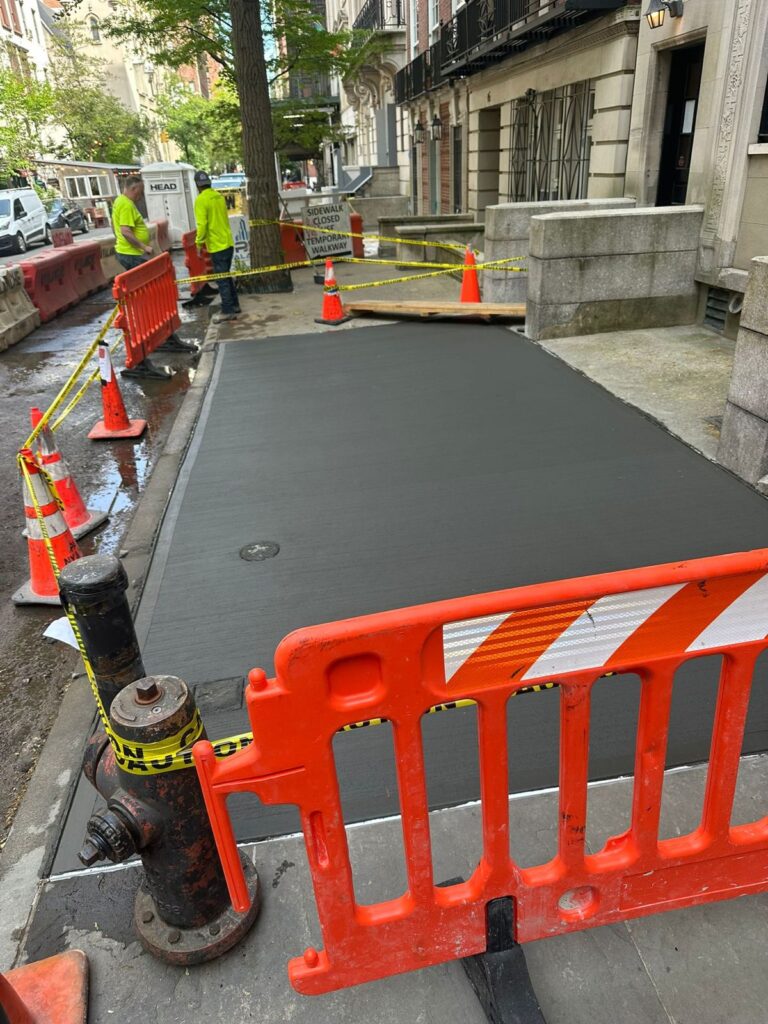
Concrete Sidewalk Repair NYC: A Guide for Homeowners
The bustling streets of New York City are paved with iconic concrete sidewalks. But years of wear and tear, harsh weather, and even pesky tree roots can take their toll. Cracks, uneven slabs, and trip hazards become not just eyesores, but safety concerns for pedestrians. If you’re a homeowner in NYC facing concrete sidewalk repair, this guide is here to help you navigate the process.
Why Repair Your Concrete Sidewalk?
Beyond the aesthetic improvement, repairing a damaged concrete sidewalk is crucial for several reasons:
- Safety: Uneven slabs, cracks, and raised edges pose a tripping hazard for pedestrians, potentially leading to injuries.
- Property Value: A well-maintained sidewalk enhances the curb appeal of your property and can even increase its value.
- Compliance: The NYC Department of Transportation (DOT) holds property owners responsible for maintaining the sidewalks adjacent to their buildings. Failing to address violations can result in fines and the city fixing the sidewalk themselves, with the bill landing on you.
Signs You Need Concrete Sidewalk Repair
Several indicators suggest it’s time for concrete sidewalk repair:
- Cracks: Hairline cracks may not be immediate concerns, but larger cracks can worsen and destabilize the concrete.
- Uneven Slabs: Settling or shifting soil can cause slabs to become uneven, creating tripping hazards.
- Raised Edges: Tree roots can cause the edges of sidewalk slabs to rise, creating a tripping hazard and potentially damaging foundations.
- Spalling: This refers to the concrete surface flaking or chipping away, exposing the aggregate beneath.
- Pooling Water: Cracks and unevenness can cause water to pool, leading to further damage during freeze-thaw cycles.
The Concrete Sidewalk Repair Process in NYC
Here’s a breakdown of the typical process for concrete sidewalk repair in NYC:
- Inspection: A qualified sidewalk contractor will assess the damage and determine the best course of action.
- Permit Application: You’ll need a permit from the NYC Department of Buildings (DOB) for most repairs. Your contractor can often handle this step for you.
- Sidewalk Closure and Work: The contractor will secure a permit to close a portion of the sidewalk for safety during the repair work. The specific repair method will depend on the severity of the damage. Common techniques include:
- Mudjacking: For uneven slabs, a grout mixture is injected beneath the slab to lift it back to level.
- Slab Replacement: For severely damaged or broken slabs, complete removal and replacement with new concrete may be necessary.
- Crack Repair: Cracks are filled with a patching material designed for concrete applications.
- Inspection and Approval: Once the work is complete, a DOB inspector will visit the site to verify the repairs meet city regulations.
- Sidewalk Reopening: Upon approval, the sidewalk will be reopened for public use.
Finding a Qualified Sidewalk Contractor in NYC
The key to a successful concrete sidewalk repair project is choosing a qualified and reputable contractor. Here are some tips:
- Licensing: Ensure the contractor has a valid Home Improvement Contractor license issued by the NYC Department of Consumer and Worker Protection (DCWP).
- Insurance: Verify the contractor has liability and worker’s compensation insurance.
- Experience: Look for contractors experienced in concrete sidewalk repair in NYC, familiar with DOT regulations.
- References: Ask for references and check online reviews to gauge the contractor’s reputation.
Cost Considerations for Concrete Sidewalk Repair
The cost of concrete sidewalk repair varies depending on the size and severity of the damage, chosen repair method, and labor costs. Here’s a rough estimate:
- Small Crack Repair: $50-$100
- Mudjacking per Square Foot: $18-$25
- Slab Replacement per Square Foot: $30-$50
Additional Considerations for NYC Sidewalk Repair
- Tree Root Damage: If tree roots are causing the damage, you may need to consult with a certified arborist to determine the best course of action for the tree’s health while addressing the sidewalk. NYC Parks can help determine responsibility for sidewalk repair due to tree roots on public property.
- Free Repair Programs: In some cases, NYC Parks may offer free sidewalk repair for damage caused by tree roots on public property.
- Sidewalk Violations: If you receive a sidewalk violation notice from the DOT, it’s crucial to address the issue promptly to avoid fines and penalties.
Conclusion
By understanding the signs of sidewalk damage, the repair process, and your responsibilities





Leave Your Comment